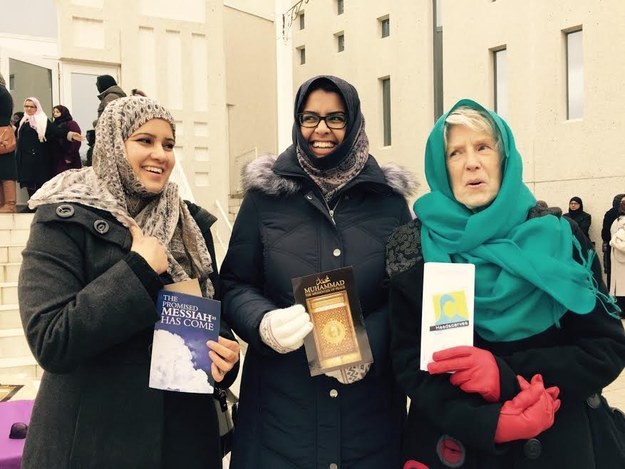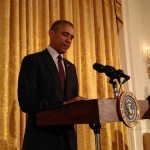Ayesha Noor
I went shopping on a hot June afternoon. I wore a cool beige outer garment over my Jeans and top and complimented it with a blue cotton headscarf. As I left one store a sales woman offered me her product. I respectfully refused, but her next question forced me to stop and listen.
“Why would you wear so many things and cover your head,on such a hot day?”
I replied, “because I revere Mary mother of Jesus, and would like to dress like her. She was ridiculed, insulted, and accused of unchaste behavior, but maintained her identity, her dignity, and attire.”
She seemed startled yet happy at my answer.
“That makes a lot of sense,” she smiled.
In a recent piece, Asra Nomani and Hala Arafa’s state, “As Muslim women, we actually ask you not to wear the hijab in the name of interfaith solidarity.” They go on to argue that Islam actually does not endorse Hijab.
Such a claim is meritless.
While Nomani and Arafa are right that Hijab does not precisely mean head covering, but instead “curtain,” “separation,” or “hiding,” they’re mistaken to claim Islam does not prescribe Muslim women to dress like Mary Mother of Jesus. An unbiased study of these meanings demonstrates that in fact, “Hijab” is much more than a mere headscarf. It has a deeper meaning of modesty which is portrayed with head covering and loose clothing. Hijab is only a modern way of referring to head covering, and there is nothing wrong with it. South Asian Muslims refer to it as Purdah. Others refer to it as Tarha. I don’t call my headscarf a Hijab either. It’s my dupatta in the summer, or shawl in the winter. Hijab is my overall modest dress code and my behaviour where I do not mix with men unnecessarily.
Nomani and Arafa meritlessly equate Hijab with weakness of women. On the contrary, Muslim women from Islam’s inception proudly covered themselves and maintained a high level of authority in their respective societies. For example, Prophet Muhammad’s first wife, Khadija, was the CEO of a large and thriving trade business. Unhindered, Prophet Muhammad’s wife Ayesha taught his male companions after his demise, while exerting immense political influence throughout her life.
According to The Worldwide Guide of Women in Leadership, most of the 250 Muslim women leaders proudly ruled while observing Hijab, and did so with great success. Women like the Regent Dowager Princess Syun Beka (1549-51) of Russia, De-facto Ruler Empress Nur Jahan of India (1611-28), and the Grand Khanum Regnant Toragana of the Qagans of China (1241-48) are but a few examples who ruled while observing Hijab. The diversity these women portray additionally demonstrates that head covering not exclusive to “Arab” culture. If the veil was truly oppressive, it is impossible that these women would have been the honored leaders of their respective societies.
Next, the writers are of the opinion that Quran is misinterpreted about Hijab or veil. Nomani and Arafa are confusing their audience by citing Hijab and veil verses side by side. Just like “covering” is used in numerous ways, Hijab (covering) or Sattur (veil) or “Khimmar” are used in different ways in the Qur’an.
As they rightly noted, the most cited verse in the favor of Hijab is verse 33:59. It reads, “O Prophet! tell thy wives and thy daughters and the women of the believers that they should pull down upon them of their outer cloaks from their heads over their faces.” But what is the confusion? In this verse, the Quran has addressed not only the wives of prophet Muhammad but all believing women. Visualizing this verse would mean that women are required to wear such a garment that covers them up completely. However, just like other Islamic commandments have adopted to different cultures, in the same manner, women’s dress code has adopted to different cultures as well.
Some Muslim women strictly cover their faces as well, some suffice on covering their heads along with loose clothing. Moreover, and contrary to extremist views, Islam is not a rigid religion that prescribes a punishment for those who do not wish to follow this Islamic commandment
Nomani and Arafa are free to choose however they want to dress. And I am saddened to learn that many mosques have denied Nomani and Arafa to pray without a headscarf. Mosques are houses of God where no one should be denied access. But their negative experience does not afford them the right to speak for those women who proudly fulfil this Islamic commandment of Hijab particularly addressed to them. It certainly doesn’t justify changing the Qur’an.
That woman I met at the grocery store probably had limited religious knowledge of Islam. Yet, she understood and felt proud that a Muslim woman is revering Mary mother of Jesus. Neither Mary Mother of Jesus, nor Muslim women who observe Hijab, are oppressed
Rather than use their negative experiences in mosques to demonize Muslim women, Nomani and Arafa should instead march on in the example of Mary Mother of Jesus, who proudly wore her Jewish attire despite ridicule and insults.
That’s what millions of Muslim women do every single day—by choice.
Follow Ayesha on twitter @FriendlyMuslim















